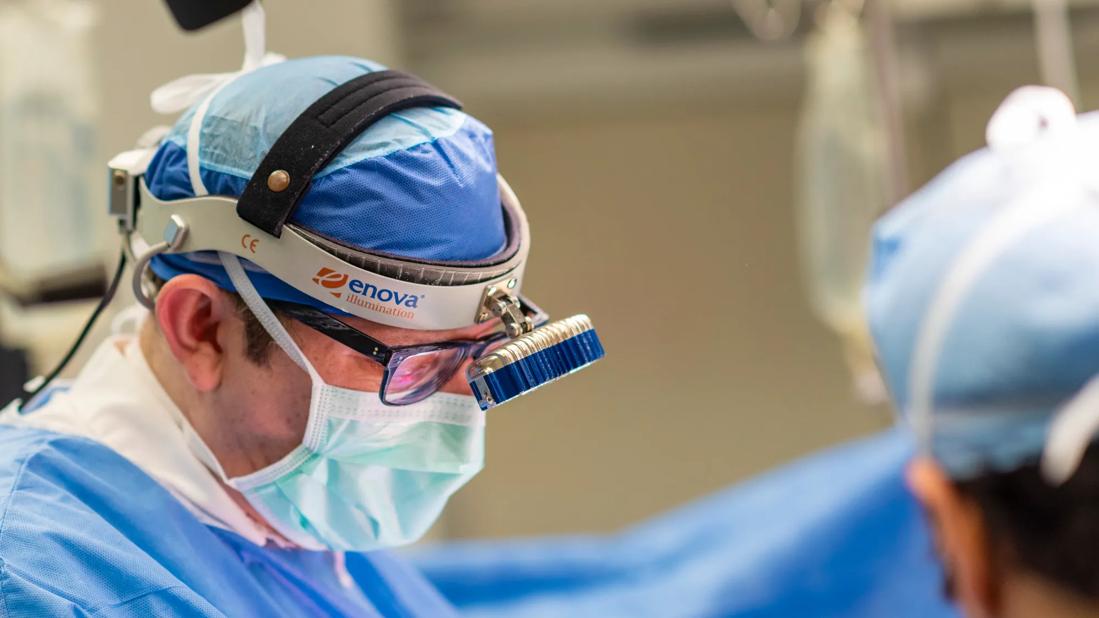Findings help close the knowledge gap around VTE practice patterns

A presentation at the American Society of Colon and Rectal Surgeons meeting found that treating patients with low-molecular-weight heparin (LMWH) after inflammatory bowel disease (IBD) surgery was associated with a significantly decreased venous thromboembolism (VTE) risk before and after discharge. In addition, the research group also developed a risk-stratification score, which they believe could be a useful tool to help standardize care as it relates to extended prophylaxis.
Advertisement
Cleveland Clinic is a non-profit academic medical center. Advertising on our site helps support our mission. We do not endorse non-Cleveland Clinic products or services. Policy
While prophylaxis guidelines for postoperative strategies to reduce VTE risk exist for treating other conditions, standardized strategies for extended prophylaxis after surgery for inflammatory bowel disease (IBD) have been lacking. Although incidences are low at between 2-4%, patients with IBD are at a higher risk of developing postoperative VTE.
“Our study came about primarily due to a well-recognized knowledge gap in VTE practice patterns after surgery for IBD,” says lead author of the study, Stefan Holubar, MD, MS, FACS, FASCRS, an IBD surgeon and Director of Research for the Department of Colon & Rectal Surgery at Cleveland Clinic. “The American Society of Colon and Rectal Surgeons recent VTE Clinical Practice Guidelines recognized IBD as a relative indication for extended prophylaxis, but they also acknowledged that this recommendation was based on limited data. This study was a collaboration with the National Surgical Quality Improvement Program (NSQIP) IBD Collaborative to try to close this gap.”
Dr. Holubar notes that LMWH has been recognized as an effective strategy for reducing instances of VTE following abdominal surgery, but those guidelines focused on cancer. The group believed that LMWH would also be protective following IBD surgeries, and they investigated the real-world efficacy of VTE chemoprophylaxis strategies after surgery for IBD.
“We also recognized the value of developing a risk calculator that was clinically useful and could serve as a bedside tool for clinicians when considering extended prophylaxis,” says Dr. Holubar. “While other risk calculators exist, they are either not specific to IBD, or they are too complex to be clinically useful. We wanted to develop something simple and easy to remember, and again, given the recent VTE Clinical Practice Guidelines statement that recognized IBD as an indication for extended prophylaxis, we felt that this was something of a priority.”
Advertisement
The retrospective cohort study included three years of data from 1,797 patients at 17 IBD centers. The 17 centers participated in the National Surgical Quality Improvement Program IBD Collaborative between July 2020 to October 2023. The median number of cases from each center was 79 (9–426). Of the 1,797 patients, a total of 44 (2.5%) developed VTE within 30 days of surgery; 22 (50%) patients developed VTE before discharge, and 22 patients developed VTE after discharge. These VTEs occurred at a median of nine days (IQR, 4–15 days) postoperatively. VTEs occurring before discharge were recorded at a median of 5 days (2 – 10.5), and VTEs occurring after discharge were recorded at a median of 11.5 (9–17.3) days, postoperatively.
Although patient demographics (age, sex, body mass index [BMI] in kg/m2, race and Hispanic proportion) were not found to be significant associated with VTE risk, patients with VTE were more likely to have ulcerative colitis (UC) than patients without VTE, and patients with UC had a higher VTE rate than patients with Crohn’s disease (CD) (3.8% vs. 1.7%, P = .005).
Patients with VTE were also more likely to have non-independent functional status, were hospitalized at the time of surgery, had two or more comorbidities, and had high rates of anemia and malnutrition compared to non-VTE patients (all P.006). Compared with non-VTE patients, patients with VTE were also more likely to have Systemic Inflammatory Response Syndrome (SIRS) (22.7% vs. 6.6%, P < .0001), and the rate of VTE with SIRS status was 8%.
Advertisement
The research group found that while the types of surgeries were not significantly different among the VTE and non-VTE groups, the extent of surgery between the groups was statistically significant (P < .0001). Extended resections were disproportionately more common among the VTE group (64% vs. 29%) and were associated with higher VTE rates (5.2% [extended] vs. 1.5% [completion proctectomy] vs. 1.2% [segmental colectomy]). Ileostomy was also a risk factor for VTE (84% vs. 58% of VTE and non-VTE patients).
In the study, the most common inpatient PPx was LMWH (48.5%). The authors found that VTE rates varied significantly by PPx strategy, both prior to discharge (LMWH, 0.57%; subcutaneous heparin [SQH], 2.1%; No PPx, 0%; P = .006) and post-discharge (no extended chemoprophylaxis, 1.4%, LMWH, 0.63% and others, 3.5%; P= .01).
Multivariable analysis revealed that both SIRS (P = .0005) and extended resections (P < .0001) were independently associated with VTE. VTE rates of 1.2%, 4.0%, and 13.5% were observed in patients with 0, 1, and 2 of these risk factors, respectively, P < .0001. However, extended PPx with LMWH was associated with a lower risk of VTE both before and after discharge (P = .002 and P = .02, respectively). Extended PPx with LMWH was associated with relative risk reductions of 74.8% and 72.6%.
“We also found that the number needed to treat [NNT] for a VTE event rate of 2.5% was 58 and 55 for the in-hospital and post-discharge periods, respectively,” says Dr. Holubar. “NNTs provide incredibly useful insights into the effectiveness of an intervention. For example, the NNT to prevent one myocardial infarction with the use of anti-hypertensive medications is around 128. On the other hand, the NNT to prevent recurrent VTE with anticoagulation is 12. So, recognizing the societal and economic costs, as well as the potentially serious long-term sequelae of VTE after surgery for IBD, we feel that this is an extremely favorable NNT.”
Advertisement
The study, “Venous Thromboembolism Prophylaxis Practice Patterns, Outcomes, and Risk Stratification after Surgery for Inflammatory Bowel Disease: A NSQIP IBD Collaborative Study,” was recently presented at this year’s American Society of Colon and Rectal Surgeons meeting in San Diego.
Advertisement
Advertisement

Insights from Dr. de Buck on his background, colorectal surgery and the future of IBD care

The Integrated Program aligns IBD care and research across Cleveland Clinic locations

Diet has a profound impact on how the intestine functions

Patients, caregivers and healthcare partners explore challenges during key transition points in care

Reassuring results, but patient education is still important

Insights on guiding treatment decisions

Underlying inflammation may cause higher rates of CV events

Cleveland Clinic and Johns Hopkins collaboration could help meet need for new therapies